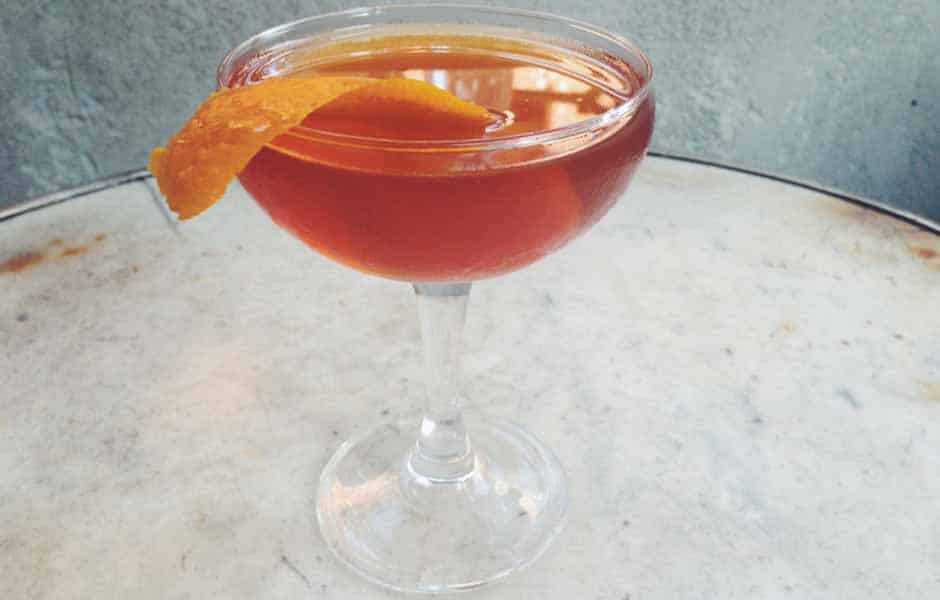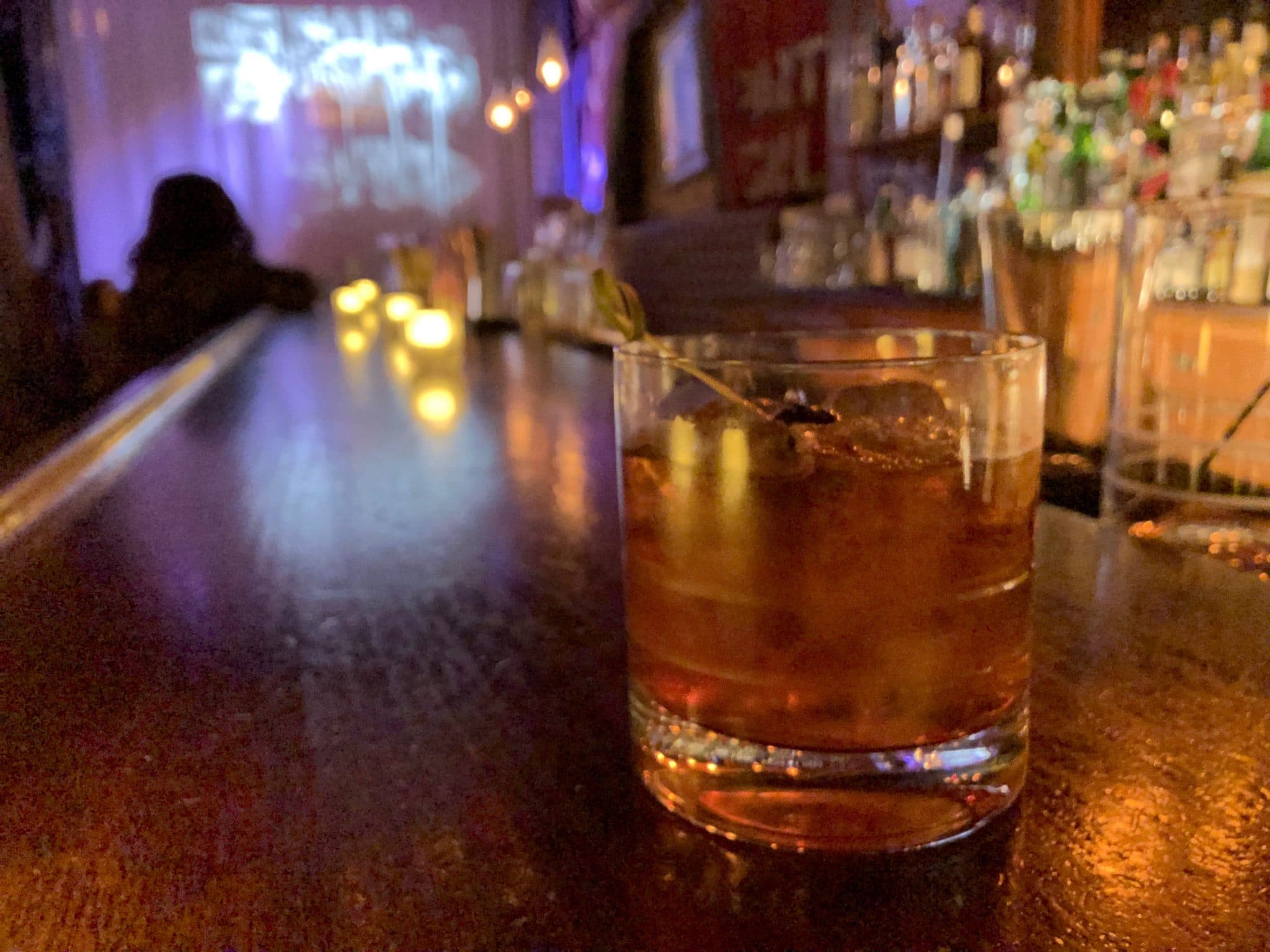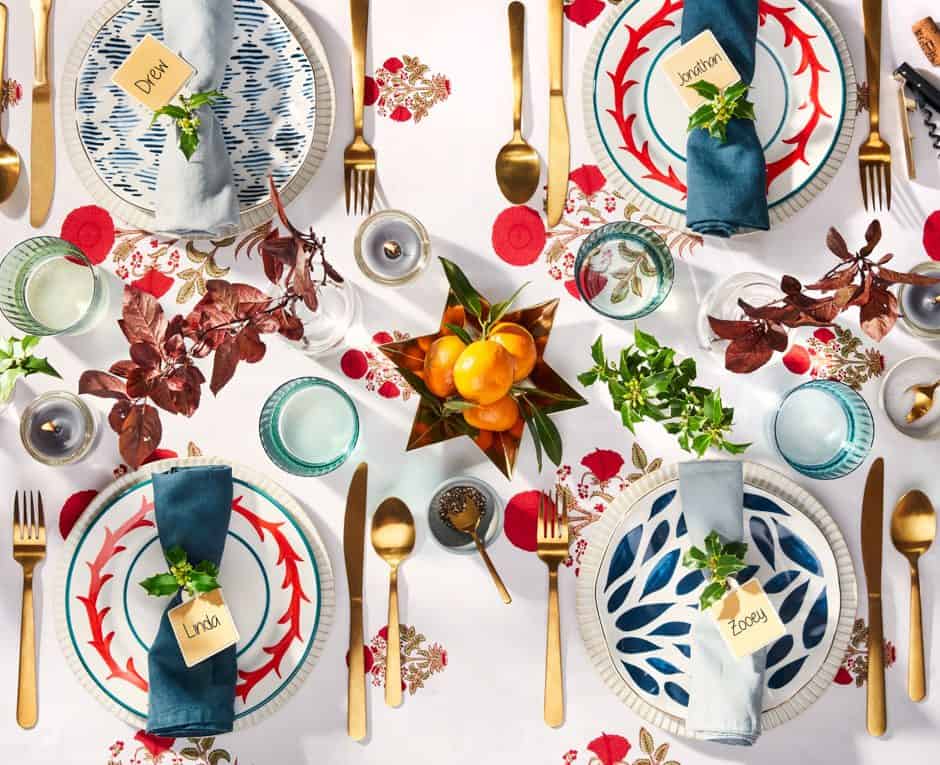Cocktail Companion: The Classic Manhattan
This cocktail must be stirred, never shaken.

The venerable—and very, very tasty—Manhattan.PHOTO: TWENTY20
It is difficult to think of a more venerable cocktail than the Manhattan. The mere whisper of it conjures images of dimly lit, wood clad rooms with the musk of drawn-out evenings lingering about. It is one of the true survivors from the late 19th century. Having been spilled from clinking glasses in the first golden age of the cocktail, wading through Prohibition, close at hand post-war and patiently waiting on the fringes during disco and parachute pants—it now proudly stands front and center during the modern cocktail renaissance.
I’ll spare you yet another attempt to uncover the history of the Manhattan and focus on how to get the most out of crafting your own cocktail. Historians have tirelessly pecked away at the roots of this drink. I recommend diving into the research of credible authors David Wondrich and Philip Greene. Much of the regurgitated information you’ll find online has skimmed from the work these gentlemen have done.
As I write this, sipping a Manhattan, the many reasons for its longevity are clear: simple ratios, a handful of readily available ingredients, relatively forgiving in preparation, and utterly delicious when done well. It is lovely as a slow sipper throughout the evening, paired with a rich main dinner course, and as a nightcap. Any cocktail enthusiast should become adept at making this cocktail. It goes without saying that a professional bartender should have it mastered.
So what’s in the glass? At its core, the Manhattan is American whiskey, sweet vermouth, and aromatic bitters (we will look at this in a ratio 2:1, whiskey to vermouth). You will find recipes calling for orange bitters, dry vermouth—shudder—and varying proportions, but we’ll focus on the way you’ll most often find this drink prepared by capable, modern bartenders.
The foundation of this cocktail is the whiskey. It’s likely that American rye whiskey would have been the go-to in the early days of the cocktail. This is as good a choice now as ever. A high-quality bourbon will do just fine in a pinch as well. Look for something with backbone—at least 90 proof, but preferably bonded (100 proof) and with a bit of age on it; 8 to 12 years is nice sweet spot. Wild Turkey 101 Rye and Rittenhouse 100 are sensible, inexpensive options. I’d spend just a few dollars more and go for Henry McKenna 10-Year Bourbon or Knob Creek Rye. There are plenty of quality brands readily available: Bulleit, Woodford, Elijah Craig, and others can usually be found at even the most lightly stocked spirits stores.
“Each sip should reveal new notes on your tongue, the sum of the components greater than any individual.”
Next up is the sweet vermouth. You cannot overlook the importance of this ingredient, as it is one-third of the total recipe and brings loads of complexity, texture, and flavor. Many Manhattans that totally miss the mark can be attributed to low-quality vermouth or vermouth that has gone bad. Remember that vermouth is a fortified wine; if it sits in a warm liquor cabinet for a year, an open bottle will oxidize and throw off your entire cocktail.
Choosing the right flavor profile for your guest’s taste is also important. There are dozens of vermouths available at well-stocked stores, and it can be a bit confusing. I have had the privilege of judging some of the most prestigious cocktail competitions in the world, one of them focused solely on the Manhattan (and hosted by Woodford Reserve). Another area where some bartenders miss is choosing a vermouth that takes over the drink. Carpano Antica Formula is the biggest offender; while delicious on its own, it yields a vermouth Manhattan, overshadowing even the boldest whiskeys. I recommend Noilly Prat, Dolin, Cocchi di Torino, or Punt e Mes—my favorite is blending equal parts of the last two. Lastly, keep your vermouth refrigerated and buy smaller bottles (e.g., 375 milliliter) if you don’t use it often.
You will hear folks call for a “dry” or “perfect” Manhattan as well. This means utilizing dry vermouth in lieu of sweet or equal parts dry-and-sweet, respectively. There aren’t many drinks I don’t care for, but there isn’t a place for either of these on my personal menu. Naturally, I will always give a guest what they ask for, but my palate doesn’t agree with my hospitality in this case.
Finally, we call for a couple dashes of aromatic bitters. Angostura is the go-to here and by far most readily available. Older recipes will call for orange bitters, which, while tasty, can’t match the flavor bridge built by the spices in Angostura.
Onto the preparation. A rule of thumb exists when making cocktails: If you have a drink with all spirits, it should be stirred. If you have a drink with juices, it should be shaken. The difference in the finished product cannot be overstated. With that in mind, I insist that this cocktail be stirred, never shaken. The goal of both shaking and stirring is to integrate the ingredients, reduce the temperature, and dilute to the desired level. Stirring will yield a drink with a velvety, rich, and silky texture. Everything should live harmoniously and the flavors should not be washed out. Each sip should reveal new notes on your tongue, the sum of the components greater than any individual.
The glassware choice is up to you. If you have access to large pieces of dense ice, serving this on the rocks is fine. If you’re dealing the ice typically found in a home freezer, stir this cocktail and serve it in a chilled martini glass or coupe.
Lastly, we look at the garnish. The maraschino cherry is the iconic topper for the Manhattan. Run, don’t walk, away from the bright red orbs synonymous with ice cream sundaes. That’s like putting ketchup on a piece of wagyu beef. There are quality versions available imported from Europe or you can find recipes to make your own. If you don’t have a decent cherry on hand, avoid it altogether. Classically, you will see a twist called for as well. While lemon is more traditional, I enjoy the aroma that orange oil lends to this cocktail. In the end, it is your drink. Experiment, have fun, and make another.




